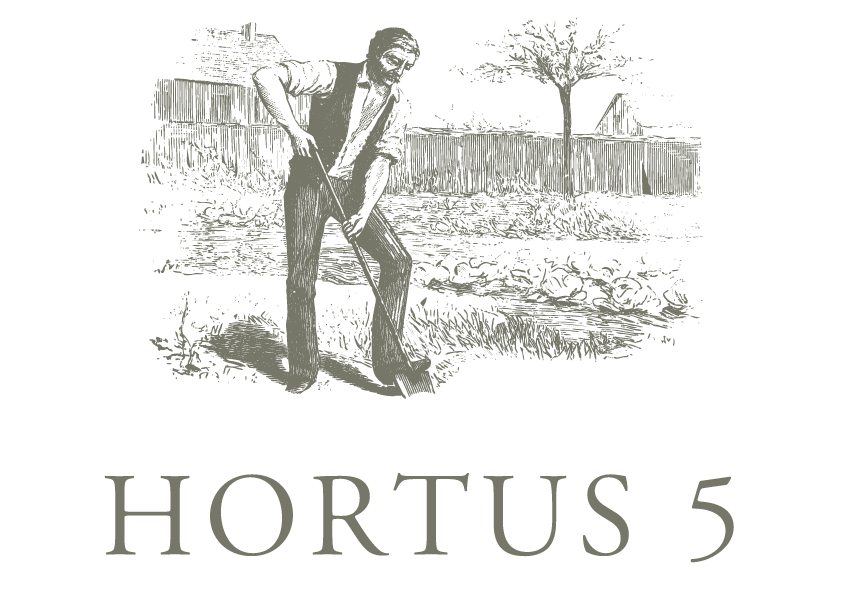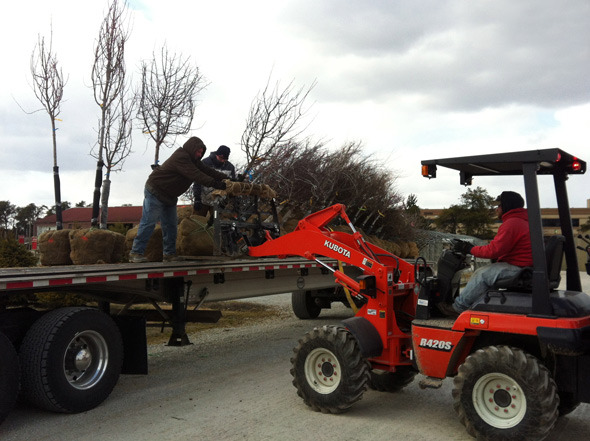There is something new this year in the vegetable garden– raised beds. They have long been a gardener’s favorite because they make it possible to have the best possible soil without having to fix the problems in your existing soil. This is how we made ours.
 We selected a product called the M Brace for our raised beds. I fell in love with their stylish form and promise of speed and convenience. There are many prefab kits and products on the market, but DIYers can fashion raised beds out of many different materials including synthentic composites made from recycled plastic or rubber, concrete block and brick, or any naturally rot-resistant woods.
We selected a product called the M Brace for our raised beds. I fell in love with their stylish form and promise of speed and convenience. There are many prefab kits and products on the market, but DIYers can fashion raised beds out of many different materials including synthentic composites made from recycled plastic or rubber, concrete block and brick, or any naturally rot-resistant woods.
 Our materials consisted of the steel M Braces, lumber, a few concrete pavers (optional), and growing media. The size of each bed measures 4 x 8 feet and 16 inches deep. Since the area for the beds was uneven, it required a bit of digging to meet the goal of levelness. I set some concrete pavers beneath the steel corners in hopes of minimizing settling. This step was not necessary, but I’m fastidious about these sorts of things. Digging was actually the hardest part of this project. From here on out, it went very fast.
Our materials consisted of the steel M Braces, lumber, a few concrete pavers (optional), and growing media. The size of each bed measures 4 x 8 feet and 16 inches deep. Since the area for the beds was uneven, it required a bit of digging to meet the goal of levelness. I set some concrete pavers beneath the steel corners in hopes of minimizing settling. This step was not necessary, but I’m fastidious about these sorts of things. Digging was actually the hardest part of this project. From here on out, it went very fast.

 Of the 10 eight-foot pieces, only 4 required cutting to make the short sides. Once the lumber was cut, it literally took no more than 5 minutes to assemble each bed. I simply slid the boards into the corners and was done. I gotta admit, I was pretty impressed by how easy it was to build the walls of each bed. Any extra soil from digging was placed in the center of each bed and eventually leveled out.
Of the 10 eight-foot pieces, only 4 required cutting to make the short sides. Once the lumber was cut, it literally took no more than 5 minutes to assemble each bed. I simply slid the boards into the corners and was done. I gotta admit, I was pretty impressed by how easy it was to build the walls of each bed. Any extra soil from digging was placed in the center of each bed and eventually leveled out.
Next, the fill. It’s important to choose a good growing medium for your beds. Do not skimp here. Ordinary soil alone will become compacted and that only leads to poor aeration and water drainage. Instead, make your own growing media or purchase a premixed potting soil from a garden supply store.
 We’re using Mark’s Mix from our local mulch supplier, Indiana Mulch & Stone. Mark’s Mix is composed of Mushroom Compost, Black Top Soil, Peat Moss and Hardwood Fines. Of all these ingredients, Mushroom Compost is the most beneficial. It’s a totally organic, rich, moist mixture of wheat straw, peat moss, cottonseed meal, cottonseed hulls, corncobs, cocoa bean shells, gypsum, lime, chicken litter and/or horse stable bedding. This combination of ingredients is used in commercial mushroom farms to grow mushrooms. Following mushroom production, the compost is cooked off at 160° F for 10 hours to kill undesirable pests and is usually free from weed seeds.
We’re using Mark’s Mix from our local mulch supplier, Indiana Mulch & Stone. Mark’s Mix is composed of Mushroom Compost, Black Top Soil, Peat Moss and Hardwood Fines. Of all these ingredients, Mushroom Compost is the most beneficial. It’s a totally organic, rich, moist mixture of wheat straw, peat moss, cottonseed meal, cottonseed hulls, corncobs, cocoa bean shells, gypsum, lime, chicken litter and/or horse stable bedding. This combination of ingredients is used in commercial mushroom farms to grow mushrooms. Following mushroom production, the compost is cooked off at 160° F for 10 hours to kill undesirable pests and is usually free from weed seeds.
 The mix was delivered and we went right to work filling each bed. Prior to filling, I laid a piece of semipermeable weed barrier (landscape cloth) that allows air and water to pass through. My goal is to keep the vegetable roots from reaching the original soil, hence the 16 inch depth of the beds.
The mix was delivered and we went right to work filling each bed. Prior to filling, I laid a piece of semipermeable weed barrier (landscape cloth) that allows air and water to pass through. My goal is to keep the vegetable roots from reaching the original soil, hence the 16 inch depth of the beds.
 With the sun setting, the beds were filled. Next steps will include planting the vegetables and mulching around the perimeter of each bed. Check back soon for a progress report. Until then… keep growing.
With the sun setting, the beds were filled. Next steps will include planting the vegetables and mulching around the perimeter of each bed. Check back soon for a progress report. Until then… keep growing.
Benefits of Raised Bed Gardening:
Raised beds are designed so you don’t step in them, thereby reducing soil compaction. A properly designed raised bed allows you to garden from the path outside of the bed.
Raised beds can extend your planting season since they tend to warm up and dry out sooner in spring, allowing for earlier planting. They also remain productive later in the fall.
If you have limited mobility, you can make a ‘standing’ raised bed so it is more accessible. This can eliminate kneeling or bending as you garden.
Plants can be planted closer together in a raised because you don’t need places to step. This increases your productivity per square foot.
Soil conditions can be controlled more efficiently in a raised bed. They can even be varied from bed to bed.
Once the bed is constructed, soil preparation becomes minimized in future years.
Design Tips:
Beds that can be accessed from one side only should be no more than 2 feet wide. If you can reach the bed from both sides it could be up to 4 feet wide. Remember, you want to keep the soil light, loose and untrampled while you plant and weed.
Make sure the path between the beds is wide enough to access all sides.
Raised beds don’t require frames. They can be as simple as a heap of soil on the ground.
Raised beds do not have to be tall. Raising the soil just a few inches will improve water drainage.
No side support is necessary for shallow beds less than 6 inches tall. Gently slope the sides of smaller beds to prevent soil erosion from water and wind.
No saw? Have your lumber precut to your specifications before you bring it home.
Links:
Art of the Garden: creators of the M Brace | artofthegarden.net
Eartheasy: great prefab kits if you’re not handy | eartheasy.com
Indiana Mulch & Stone: downtown Indy’s mulch supplier | indianamulch.com
 I’m back after a little break from posting to Hortus 5. Truth is, I’ve been savoring winter’s slow motion and luxuriating in its quite stillness. Now Spring is finally here and the last couple of days have been damp and chilly. Inbetween sunrise and sunset, one can still see their breath. I think most everyone in the Midwest is yearning for a warm and sunny Spring. No such luck, yet.
I’m back after a little break from posting to Hortus 5. Truth is, I’ve been savoring winter’s slow motion and luxuriating in its quite stillness. Now Spring is finally here and the last couple of days have been damp and chilly. Inbetween sunrise and sunset, one can still see their breath. I think most everyone in the Midwest is yearning for a warm and sunny Spring. No such luck, yet.




































































































































